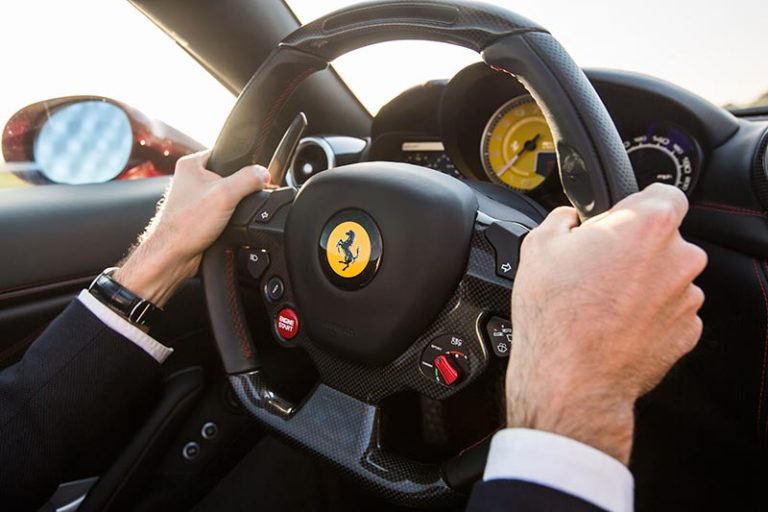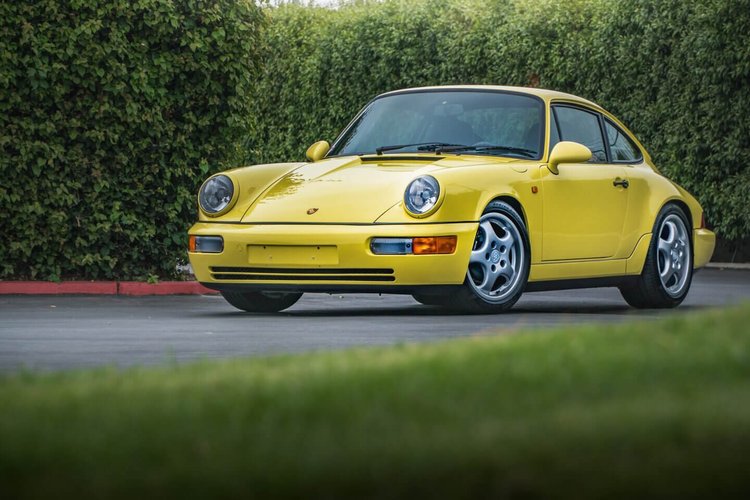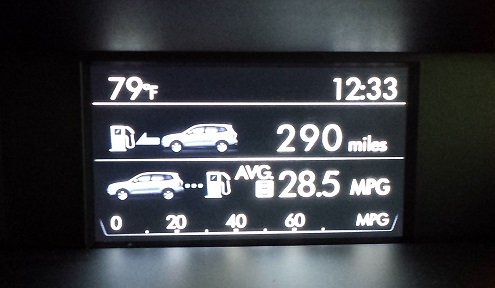How Long Does a Car Wrap Last?
Have you ever wondered how long a car wrap lasts? A car wrap is a popular way to change your car’s look without painting it. It’s like a big sticker for your car that can have any color or design. In this guide, we’ll find out how durable these wraps are, what affects their lifespan, and when you might expect to replace them. So, if you’re thinking about giving your car a new style, keep reading to learn more about the lifespan of car wraps.
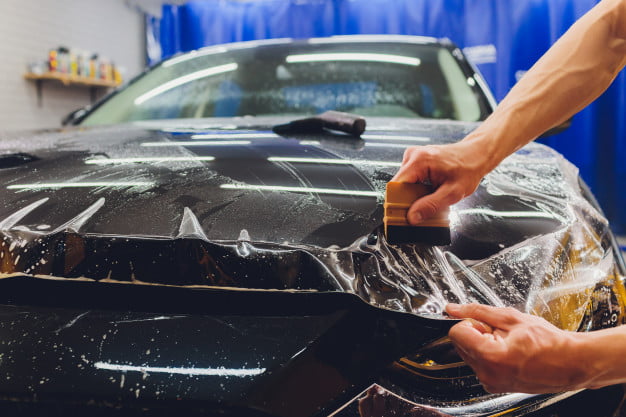
How Long Does a Car Wrap Last?
A car wrap typically lasts between 5 to 7 years if it is well maintained. The longevity of a car wrap depends on several factors, including the quality of the material used, the expertise of the installer, the conditions under which the car is driven, and how the vehicle is stored.
- Quality of Material: High-quality vinyl wraps tend to last longer. Top brands like 3M, Avery Dennison, and Oracal are known for producing durable wraps that can withstand the elements.
- Installation: A professional and experienced installer will ensure that the wrap is applied correctly without imperfections, which can extend the life of the wrap. Proper cleaning and preparation of the vehicle’s surface before application also play a crucial role in the longevity of the wrap.
- Environmental Conditions: Exposure to harsh weather conditions, such as extreme sun, heavy rain, or snow, can affect the lifespan of a car wrap. Cars parked outdoors or in areas with intense weather conditions might see a shorter wrap lifespan.
- Care and Maintenance: Regular cleaning and maintenance can significantly extend the life of a car wrap. It is recommended to wash the wrapped vehicle regularly with non-abrasive cleaning products and avoid high-pressure washes. Additionally, waxing with a silicone or Teflon-based polish can help protect the wrap from scratches and UV damage.
How to Extend the Lifespan of a Car Wrap?
A car wrap is a significant investment and its longevity plays a key role. Here are some effective methods for prolonging your car wrap’s lifespan.
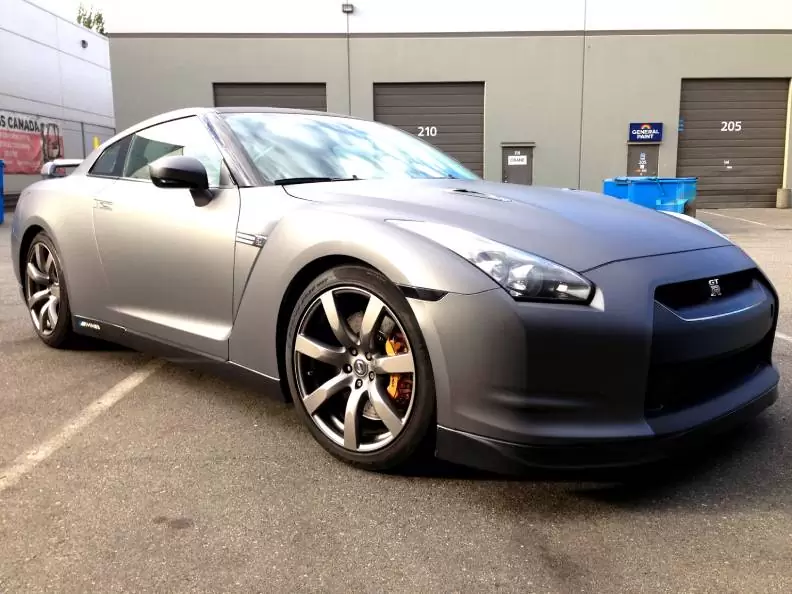
- Choose Professionals for Installation: Installation by industry professionals sets the pace for the wrap’s lifespan. They possess the expertise to prepare and work with your car’s surface, utilizing the best tools and techniques for the application.
- Adopt a Gentle Washing Technique: Avoid hard brushes and stiff clothes. Instead, use a soft sponge with mild soap for cleaning. Rinse thoroughly to avoid soapy spots that attract dirt.
- Use Wax or Sealant: The application of a clear coat or wax shields your car wrap from debris, protecting the vinyl. They also defend your wrap against harmful UV rays, which tend to fade the wrap and shorten its lifespan.
- Prioritize Parking in Shaded Areas: Consider parking under shade wherever possible, like under a tree or in a covered parking garage. If such options aren’t accessible, investing in car covers for unused periods is beneficial.
- Dry Wraps Thoroughly: Post the cleanup, dry the wrap with a chamois or a microfiber towel, ensuring no water spots that could potentially damage the wrap.
Benefits of Wrapping Versus Painting
Wrapping a car offers several advantages over a traditional paint job:
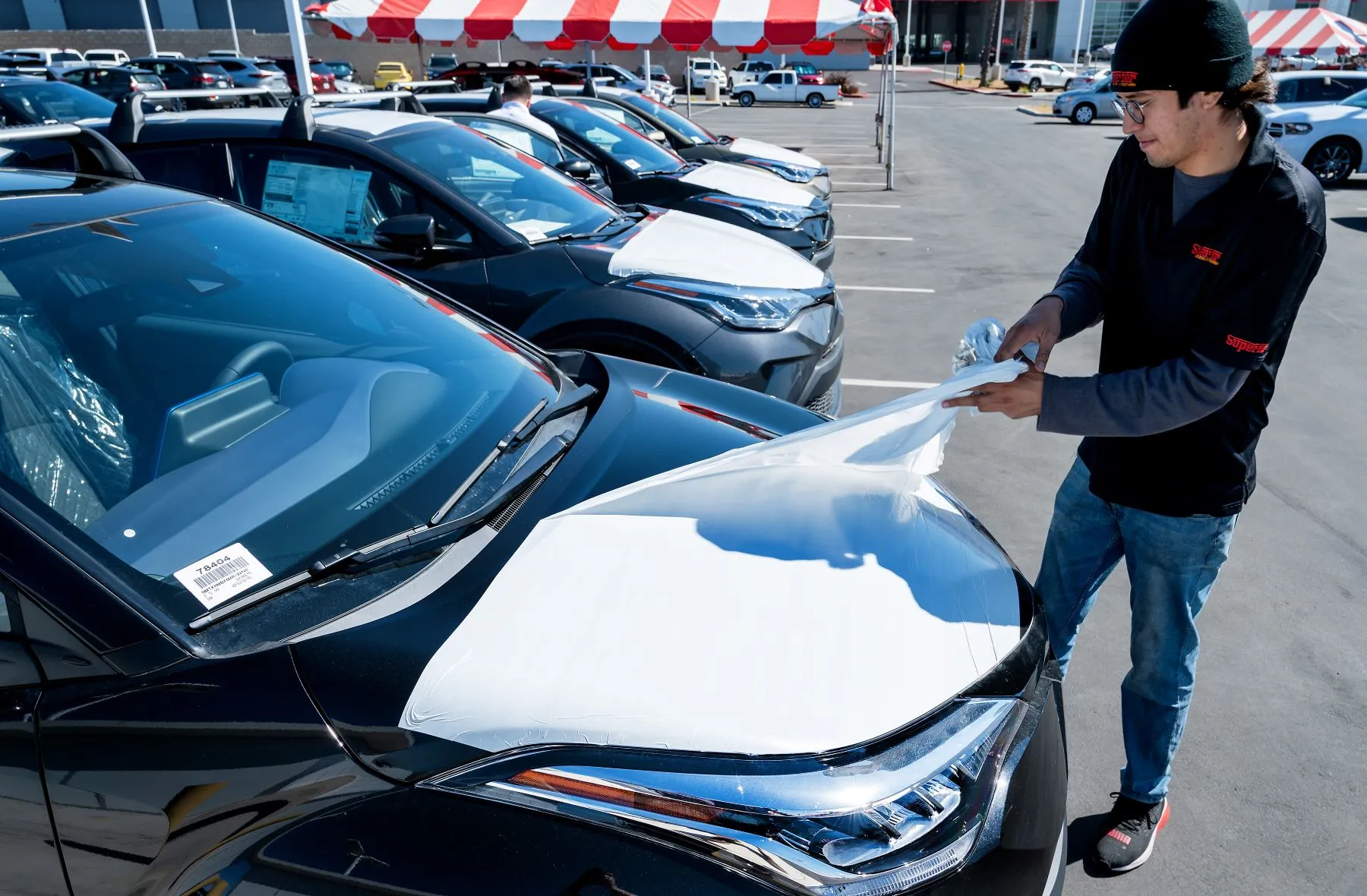
1. Customization:
- Wider Variety: Wraps come in a vast array of colors, finishes (matte, metallic, chrome, etc.), and even textures that are simply impossible to achieve with paint. You can also incorporate intricate designs, and graphics, or even completely transform your car’s look with a photorealistic wrap.
- Reversible: Wraps are removable, so you can easily change the look of your car down the line without any permanent modifications. This is ideal if you want to maintain the original paint job for resale or simply get tired of the design.
2. Protection:
- Paint Shield: A high-quality wrap can act as a protective layer, shielding the original paint from scratches, stone chips, minor abrasions, and even fading caused by sunlight. This can help preserve the car’s value in the long run.
3. Time and Cost:
- Potentially Faster: While complex wrap designs can take time, a simple wrap job can often be completed in a shorter timeframe compared to a multi-layered paint job.
- Cost-effective (in some cases): Depending on the complexity of the design and paint quality chosen, a wrap can be a more affordable option than a high-end paint job. However, basic paint jobs might be cheaper than basic wraps.
Additional Benefits:
- Easier Maintenance: Wrapped cars generally require less maintenance compared to painted cars. You won’t need to wax a wrapped car, and washing is usually a simpler process.
Here’s a table summarizing the key points:
| Feature | Wrap | Paint |
|---|---|---|
| Customization | Wider variety, reversible | Limited colors and finishes |
| Protection | Protects original paint | None |
| Time | Potentially faster | Generally slower |
| Cost (varies by quality) | Potentially cheaper (for complex designs) | Potentially cheaper (for basic jobs) |
| Maintenance | Easier | More demanding (waxing etc.) |
How Do I Take Care of My Car Wraps?
Maintaining your car wrap prolongs its lifespan, potentially reaching up to seven years. Here are three tips to assist in preserving its longevity.
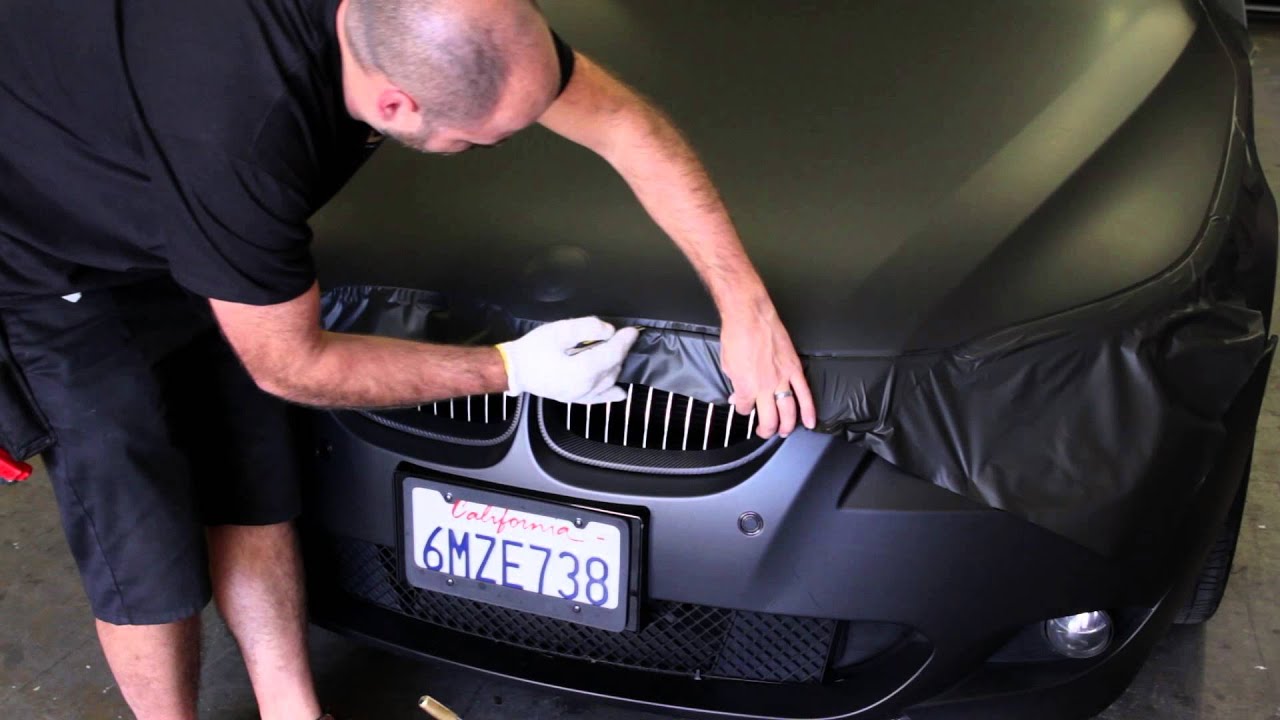
- Gentle cleaning regimen. Residue from dirt and grime, over time, accelerates the wrap’s deterioration. It’s essential to clean your car regularly. Use non-abrasive detergents and a soft sponge or cloth to avoid damaging the vinyl.
- Avoid sharp objects. Scratches or punctures degrade the wrap and shorten its lifespan. Keep a safe distance from anything that poses a risk of sharp contact, including bushes, low branches, or any other potentially damaging objects.
- Minimize sun exposure. Prolonged exposure to UV rays can fade car wraps over time. Storing your car indoors, if feasible, serves as one of the best practices in extending the life of your car wrap. Opting for an indoor parking spot during the day or investing in a UV protective cover can also help.
When to Replace a Vehicle Wrap?
Deciding when to replace a vehicle wrap involves observing various signs of wear and evaluating the overall condition of the wrap. Here are some key indicators and considerations that can help you determine when it’s time to replace your vehicle wrap:
1. Fading and Discoloration
Over time, exposure to sunlight and the elements can cause your wrap to fade and lose its vibrant colors. If you notice significant fading or if the graphics start to look less vibrant than they used to, it might be time to consider replacing the wrap to maintain the aesthetic appeal of your vehicle.
2. Peeling and Lifting
If the edges of the wrap begin to peel or lift, it can not only diminish the appearance of your vehicle but also lead to further damage as dirt and moisture can get underneath the vinyl. Peeling can be caused by poor installation or simply the age of the wrap. Once peeling begins, it’s often difficult to stop, indicating that a replacement might be necessary.
3. Cracking and Brittle Texture
Vinyl wraps exposed to extensive UV rays or cold climates can become brittle and crack over time. These cracks can compromise the protective layer of the wrap, exposing the paint beneath to potential damage. If you notice cracking across various parts of the wrap, it’s a clear sign that the material has aged and needs to be replaced.
4. Wear and Tear
Everyday use, frequent washing, and exposure to harsh environmental conditions can cause general wear and tear on a vehicle wrap. Scratches, stains that can’t be removed, and other forms of damage can diminish the overall look and effectiveness of the wrap as a protective layer.
5. Change of Preference or Branding
Sometimes, the reason to replace a wrap isn’t wear and tear but a change in personal preference or business branding. Vehicle wraps are a fantastic way to advertise or express creativity, so updating the graphics to reflect a new branding strategy or simply a change in taste might prompt a replacement.
6. Upcoming Sale
If you are planning to sell your vehicle and the current wrap is highly personalized or shows signs of aging, replacing it with a fresh wrap or removing it to expose the original paint can increase the vehicle’s appeal and potentially its resale value.
Frequently Asked Questions
How Should I Clean a Car Wrap?
Cleaning a wrapped car requires gentle techniques. Use a soft sponge or non-abrasive cloth, along with a car wash solution, to hand wash the vehicle. Rinse the soap off thoroughly with water and then dry using synthetic shammy or low microfiber fabric. Be sure to wipe door handles, moldings, mirrors, and seams gently.
Are Car Wraps As Durable As Paint?
Typically, a car wrap lasts around five years before it requires maintenance or replacement, while a paint job can last between ten to fifteen years. However, the upkeep of paint is often more costly and less sturdy than a vinyl car wrap.
Can a Car with Peeling Paint Be Wrapped?
Yes, it is indeed possible to wrap a car that has peeling paint. However, an additional step is required for the process, particularly if it’s the clear coat that is peeling off.
Are There Any Disadvantages to Wrapping a Car?
The quality and durability of a car wrap depends highly on the competence of the wrapper. Low-quality wraps might fade over time or possibly even lead to paint damage when removed.

Hi! I’m Larry Gibbs, studying mechanical engineering with a focus on cars. I really love Ferraris and write blog posts about the latest car stuff. When not studying or blogging, I’m usually on a road trip exploring new places. I also enjoy playing football and watching movies. Life’s an adventure, and I’m all about enjoying the ride!

